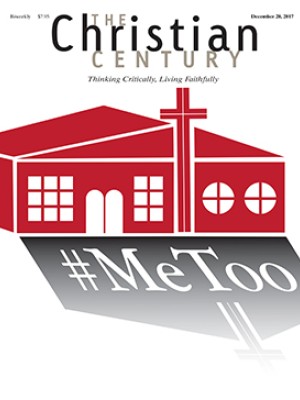January 14, Epiphany 2B (1 Sam. 3:1-20; Ps. 139:1-6, 13-18; John 1:43-51)
I like that Jesus isn't actually what the disciples are looking for.
I had always thought the pulse quickened, that that’s how you knew. That’s what I’d heard at least—that your heart rate sped up when the other person was around. Mine didn’t; it slowed. So I didn’t think of that physical symptom as an indicator of what was happening. But looking back I can tell you that when we were in the same place, no matter how big the room, I was calmer knowing he was there.
Then when I was preparing to do a wedding rehearsal that would inevitably run late—and I am nearly Teutonic in my precision—he said gently, “Well, you know that that will happen, so what will you do when it does?” He was so apt and knowing and gentle.
Read our latest issue or browse back issues.
He was, of course, all wrong—too young and a big sports fan and planning a cross-country move. But he was just so interesting. I hadn’t thought to pray for “interesting” when imagining a spouse, but there he was, a great conversation partner. We are married now, and delightfully so. My epiphanies almost always happen after the fact. The situation presented is not obviously the right or only choice. A choice gets made anyway, and only upon reflection, often many years later, do I see the red thread of God’s hand leading me through, that the same God who beheld “my limbs yet unfinished in the womb” (Ps. 139:15) led me to something good and right and fitting and lush. I never know that, though, in the moment. In the moment there are simply all of life’s options.
Because my decisions have lacked the drama of Samuel being called by God—or Saul’s transformation into Paul, or the synoptic Gospels’ story of the skies parting and the voice from heaven and all that—I appreciate John’s version of the call of the disciples. And I’m so grateful that it shows up in the lectionary back to back with Mark’s version, because John’s seems more human and humane to me. It was written later, after some people had been born and died. Perhaps by then, as in 1 Samuel, “the word of the Lord was rare” again and “there were not many visions,” so the stories about how the disciples were called had to be fleshed out a bit. Some New Testament scholars have pointed out that while in the synoptics Jesus is declared or pronounced, John 1–4 contains a series of quest stories in which a need or question is posed, and the characters are on a journey to gain insight.
Jesus just keeps saying, “Come and see . . . come and see.” And they do. The quest is answered in the seeing. I like that Jesus isn’t actually what they were looking for. He’s from Nazareth, for one thing. But Jesus tells Nathanael that he saw Nathanael under a fig tree. Maybe, as Craig Koester offers, this strikes Nathanael as a reference to the fig tree in Zechariah 3:10. But maybe it’s just so true that it stops Nathanael cold: he really was there, standing under a fig tree. I for one might consider someone differently if they were to say, “I saw you buying peanut butter–filled pretzels at 7-Eleven” or “I saw you on the train platform doing a little dance.” Upon reflection, Nathanael considers the possibility of Jesus as the Messiah—the one he’s been waiting for, but slant and not at all how he expected him.
I imagine there was a bit of the classic action-reflection model going on for Nathanael to see Jesus as the Messiah. I need reflection on my actions to recognize epiphanies in this life. The practice of action followed by theological reflection was live and lively in my teenage years, especially around the ubiquitous service trips I went on. There would be work during the day, perhaps the rather poor hanging of some vinyl siding. Then at night, usually after the spaghetti with cheese from a green can was put away but before the chocolate chip cookies from a blue bag came out, we would be asked something like, where did we see God that day and where might we put on our Jesus goggles a bit better the next day? It was a skill my peers and I honed in those years.
I do it less as an adult, though I try. I have many apps for it, to be sure: apps for Ignatian practice and the daily lectionary and contemplative prayer and other structures for reflection with God. On the occasion when I do reflect, though—and all the better when I’m in the company of others and invited to reflect conversationally—I find that the visions of the Lord are not so rare as I had thought. God is there, still revealing God’s self and inviting epiphanies. It’s just that I had to come to a point of reflection on what happened in order to see or hear God.





